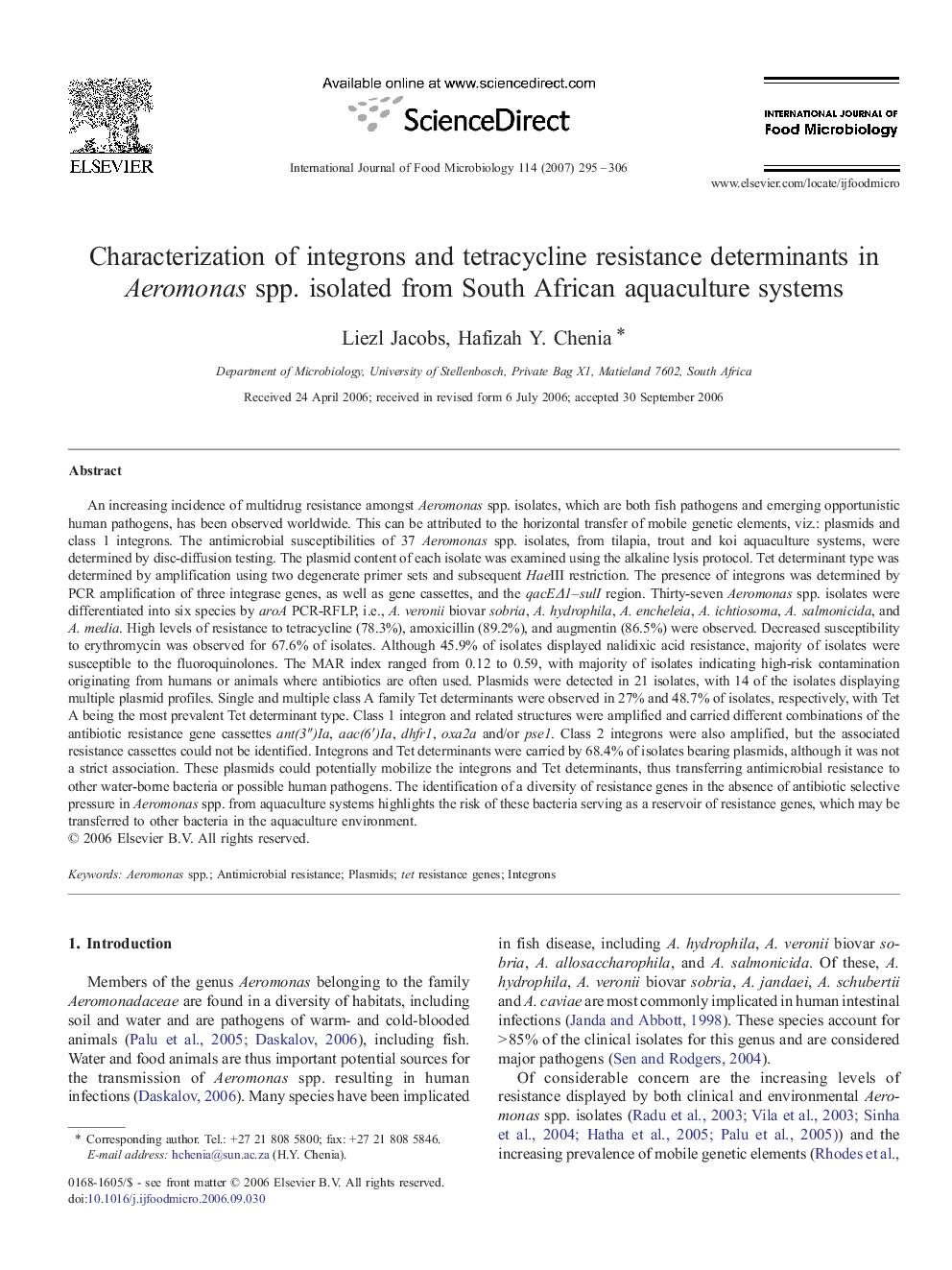| Article ID | Journal | Published Year | Pages | File Type |
|---|---|---|---|---|
| 4369666 | International Journal of Food Microbiology | 2007 | 12 Pages |
An increasing incidence of multidrug resistance amongst Aeromonas spp. isolates, which are both fish pathogens and emerging opportunistic human pathogens, has been observed worldwide. This can be attributed to the horizontal transfer of mobile genetic elements, viz.: plasmids and class 1 integrons. The antimicrobial susceptibilities of 37 Aeromonas spp. isolates, from tilapia, trout and koi aquaculture systems, were determined by disc-diffusion testing. The plasmid content of each isolate was examined using the alkaline lysis protocol. Tet determinant type was determined by amplification using two degenerate primer sets and subsequent HaeIII restriction. The presence of integrons was determined by PCR amplification of three integrase genes, as well as gene cassettes, and the qacEΔ1–sulI region. Thirty-seven Aeromonas spp. isolates were differentiated into six species by aroA PCR-RFLP, i.e., A. veronii biovar sobria, A. hydrophila, A. encheleia, A. ichtiosoma, A. salmonicida, and A. media. High levels of resistance to tetracycline (78.3%), amoxicillin (89.2%), and augmentin (86.5%) were observed. Decreased susceptibility to erythromycin was observed for 67.6% of isolates. Although 45.9% of isolates displayed nalidixic acid resistance, majority of isolates were susceptible to the fluoroquinolones. The MAR index ranged from 0.12 to 0.59, with majority of isolates indicating high-risk contamination originating from humans or animals where antibiotics are often used. Plasmids were detected in 21 isolates, with 14 of the isolates displaying multiple plasmid profiles. Single and multiple class A family Tet determinants were observed in 27% and 48.7% of isolates, respectively, with Tet A being the most prevalent Tet determinant type. Class 1 integron and related structures were amplified and carried different combinations of the antibiotic resistance gene cassettes ant(3″)Ia, aac(6′)Ia, dhfr1, oxa2a and/or pse1. Class 2 integrons were also amplified, but the associated resistance cassettes could not be identified. Integrons and Tet determinants were carried by 68.4% of isolates bearing plasmids, although it was not a strict association. These plasmids could potentially mobilize the integrons and Tet determinants, thus transferring antimicrobial resistance to other water-borne bacteria or possible human pathogens. The identification of a diversity of resistance genes in the absence of antibiotic selective pressure in Aeromonas spp. from aquaculture systems highlights the risk of these bacteria serving as a reservoir of resistance genes, which may be transferred to other bacteria in the aquaculture environment.
